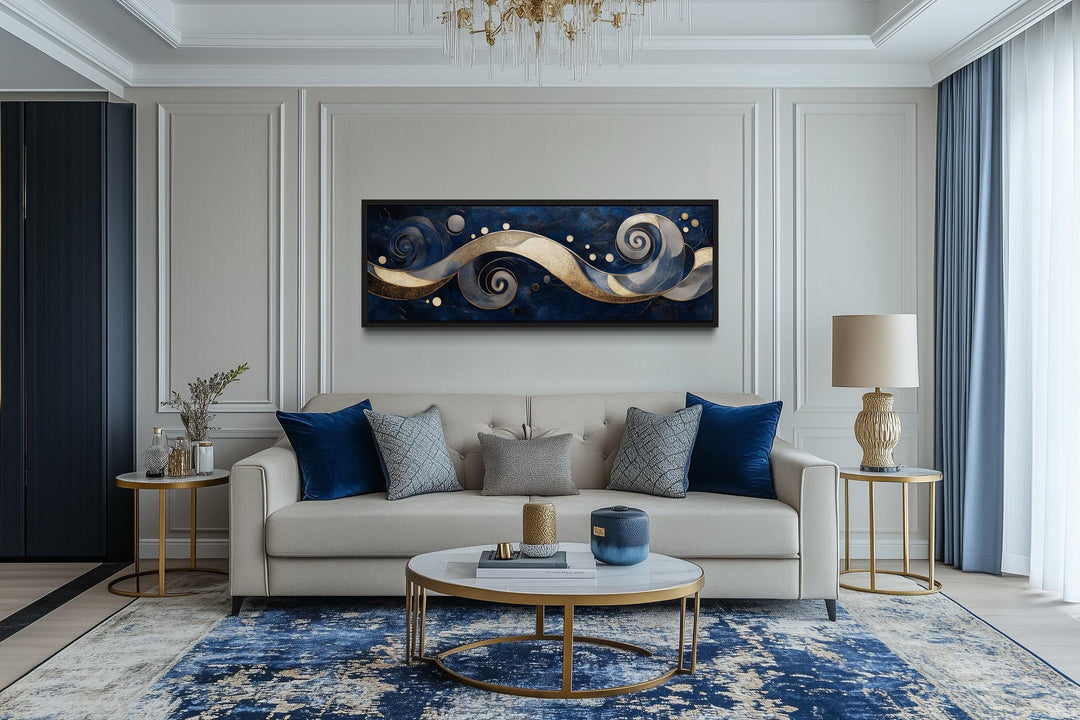Oversized Art in Dining Room: How to Capture Its Charm
For professional photographers, the interplay of art and space offers a canvas of possibilities. One such captivating subject is the use of oversized art in dining rooms. Not only does this trend offer a bold statement in interior design, but it also provides photographers with a rich tapestry of visual storytelling. Understanding how to capture the essence of oversized art in such settings can elevate your portfolio and offer clients unique and engaging visual content.

The Allure of Oversized Art
The trend of incorporating oversized art into dining rooms is not just a fleeting fashion; it is a reflection of a broader movement towards personalization and bold design statements in interior spaces. The monumental scale of this art form can transform a dining room, becoming a focal point that draws the eye and sets the tone for the entire space. For photographers, this presents an opportunity to experiment with perspective, lighting, and composition in ways that smaller pieces may not allow.
Engaging with this subject requires an appreciation for the art itself and the space it inhabits. The juxtaposition of large-scale art against the more intimate setting of a dining room creates a dynamic interplay that is ripe for exploration. For photographers, capturing this interaction is about more than just the artwork; it's about conveying the mood and atmosphere it creates within the space.
Photographic Techniques for Oversized Art
When photographing oversized art in dining rooms, consider the following techniques to enhance your shots:
Lighting and Shadows
Lighting plays a crucial role in capturing the essence of oversized art. Natural light can highlight textures and colors, while strategic use of artificial lighting can create dramatic shadows and depth. Consider using side lighting to enhance textures or backlighting to create a silhouette effect that adds intrigue.
Perspective and Composition
Experiment with different angles to find the most compelling composition. Shooting from a lower angle can emphasize the grandeur of the art, while a higher perspective might highlight the relationship between the artwork and the dining room furnishings. The rule of thirds can guide your composition, ensuring that the artwork remains the focal point.
For more inspiration, consider checking out this Pinterest board on large wall art ideas.
Color and Contrast
The colors of the artwork and the dining room should complement each other, creating a cohesive look. Use contrast to your advantage; a brightly colored piece against a neutral background can make the art pop, drawing the viewer's eye. Conversely, a monochromatic palette can evoke a sense of calm and sophistication.
Understanding the Space
The dining room's layout and decor significantly influence how oversized art is perceived. As a photographer, understanding the space allows you to capture images that reflect the intended atmosphere. Consider elements like the dining table, chairs, and any other furnishings or decorations that interact with the artwork.
For a guide on creating balance in spaces with large art, explore minimalist large wall decor tips.
Integrating Art with Surroundings
Oversized art should not feel isolated from its surroundings. Pay attention to how it integrates with the dining room's theme and style. Whether the art complements a rustic, coastal, or modern aesthetic, capturing this synergy is key to producing images that resonate with viewers.
Case Study: Successful Integration of Oversized Art
Consider a dining room with a bold, abstract piece that dominates one wall. The photographer's task is to capture not just the art, but the way it transforms the room. By focusing on how the artwork interacts with natural light streaming in from a nearby window, the photographer can create a narrative that highlights the room's ambiance and the art's impact.
Another example might involve a more subdued piece in a minimalistic setting. Here, the challenge is to convey the subtlety and elegance of the space, using the artwork as a backdrop that enhances rather than overpowers the room.
You can explore more about these styles and examples in farmhouse large wall art ideas.

FAQ
How do you choose the right oversized art for a dining room?
The choice depends on the dining room's overall theme, color scheme, and the mood you wish to create. Consider the art's style, color, and subject matter to ensure it complements the space.
What are the best lighting techniques for photographing oversized art?
Natural light is ideal for capturing colors and textures, but artificial lighting can be used to create depth and drama. Experiment with different light sources and angles to find the best effect.
How can photographers make oversized art the focal point in a dining room?
Use composition techniques such as the rule of thirds to position the art prominently. Ensure that the surrounding decor supports rather than distracts from the artwork, and use lighting to highlight its features.

